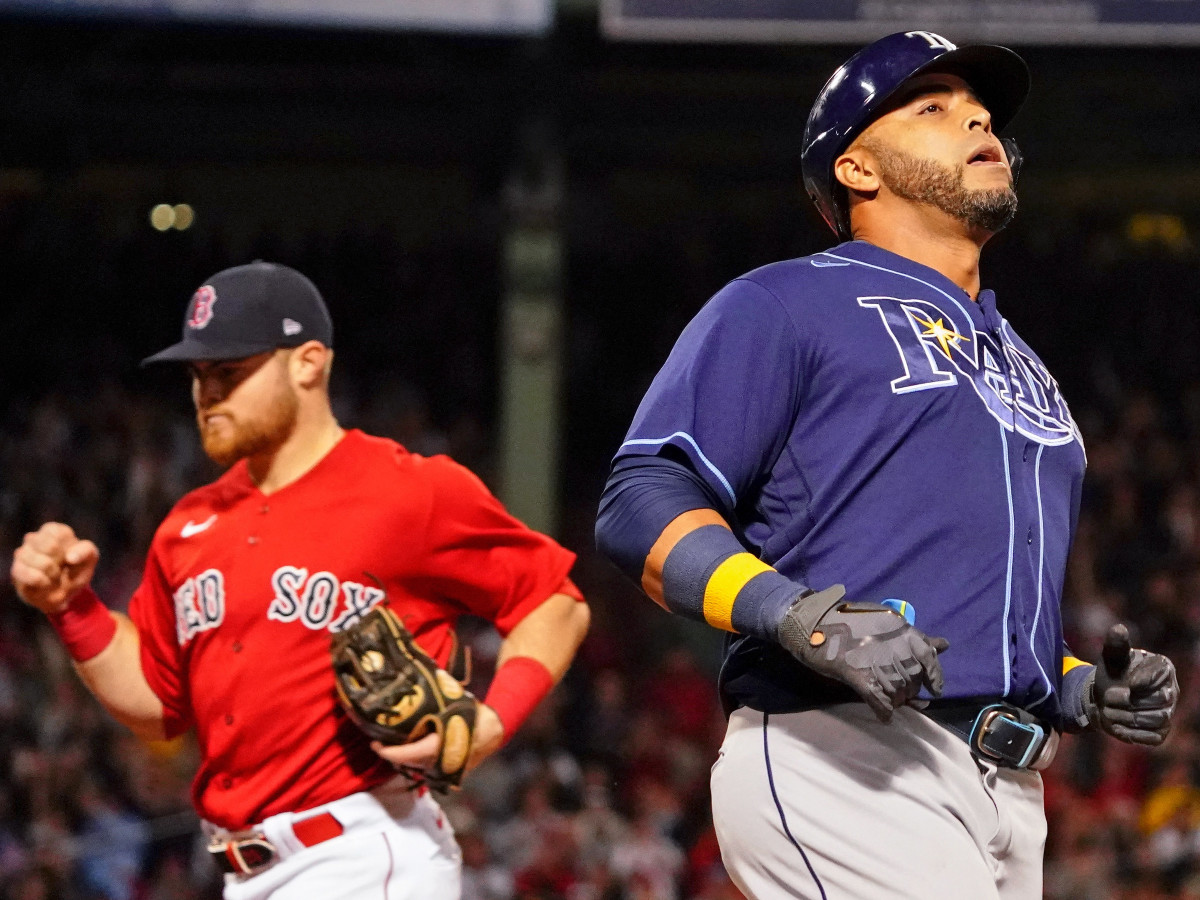Red Sox's Small-Ball Rally Saves a Sloppy 'Pen, Takes Out Top-Seeded Rays

BOSTON — The game was tense, punctuated with moments of sloppiness, teetering on the edge of what would have been a remarkable blown lead. But none of that mattered in the end for the Red Sox. All that mattered was the incremental work to advance a lead-off runner in a tie game in the bottom of the ninth—first a sacrifice bunt, then a dose of hustle to beat out a ground ball to third, a swap for a speedy pinch-runner and finally, to win it all, a sacrifice fly from Kiké Hernández.
“Old-school baseball right there,” said Boston manager Alex Cora. “Fundamental baseball, and we won the ALDS playing good fundamental baseball.”
That was not exactly a typical pathway to success for this slugging team. (Only three clubs attempted fewer sacrifice bunts this season.) But it worked. The ninth-inning small ball gave Boston its second walk-off win in as many nights to eliminate Tampa Bay, three games to one, and advance to the ALCS.

It was far from a smooth ride there. In the third inning, the Red Sox jumped out to a 5-0 lead, highlighted by a three-run home run from Rafael Devers. Yet the Rays kept chipping away over the course of the evening. Against Boston reliever Ryan Brasier in the eighth, they were finally able to tie the game with an RBI-single from (who else?) Randy Arozarena. This put in motion a familiar story for Boston: Its bullpen had just blown a save opportunity. But it was about to turn to its most stable reliever, and its unlikeliest hero from this season, rookie Garrett Whitlock.
Whitlock needed just 15 pitches to record the final six outs. He did not allow a single runner to reach first base.
“People still call him the secret weapon,” said Hernández. “It’s no secret anymore. Garrett Whitlock is legit. That is an electric arm with three plus pitches.”
The result was a remarkable dismantling of the 100-win Rays. After dropping Game 1 with lackluster play across the board, Boston came back with a wild slugfest in a blowout Game 2 and tough performances in the back-to-back nail-biters of Games 3 and 4. It was a combination that showcased what the team will need as it tries to keep playing even further into October: plenty of home runs, the ability to rely on starters like Nathan Eovaldi and Eduardo Rodriguez, and a little bit of luck.
Sign up to get the Five-Tool Newsletter in your inbox every day during the MLB playoffs.
Perhaps most telling was the Red Sox’s ability to jump all over the Rays’ vaunted pitching staff. (Particularly their bullpen: Tampa Bay’s 3.24 relief ERA in the regular season was the lowest in the American League.) That was partly a benefit in the sequencing in the series—a 13-inning marathon on the heels of a blowout loss meant significant work for every pitcher on the Rays’ roster. It left the club with no choice but to do a bullpen day with few well-rested options for a do-or-die game. But the Red Sox’s ability to exploit that situation was all their own.
“They had a pretty relentless approach at the plate,” said Tampa Bay skipper Kevin Cash. “We just could not create the swing-and-miss that we’ve done so well throughout the regular season. They really had a good approach. It felt like there was constant pressure. There were no easy outs.”

The Rays were able to strike out the Red Sox only three times on Monday. There were only three games all season in which Tampa Bay struck out fewer.
It means a trip to the ALCS for a Boston team that few thought would be here in March. The roster had obvious weak spots: The bullpen could be shaky, and the rotation had no clear leader, either, with ace Chris Sale out until midseason while recovering from Tommy John surgery. The defense was generally a weak point—they ultimately led the AL in errors with 108—and so was the baserunning. Only three teams in MLB recorded more outs on the basepaths; Boston had the lowest stolen-base percentage in the AL at 66% and stole the fewest bags with 40.
Watch MLB games online this postseason with fuboTV: Start with a 7-day free trial!
But there were clear strengths, too. Namely, this was one of the most powerful lineups in baseball, second in slugging percentage only to Toronto. Rafael Devers solidified his spot among the best young hitters in baseball, Xander Bogaerts continued his routinely stellar production, and Hernández proved how effective he could be as an everyday starter, rather than the play-as-needed utilityman he was in his years with the Dodgers. It all fit together to lead the Red Sox here.
“We always said we had a good baseball team that had some holes, and we still have some holes, but at the end, for how bad it looked sometimes, we’re still here,” Cora said. “We’re still in the dance. We’re still in the tournament, and we’re moving on to the ALCS.”
More MLB Coverage:
• Inside Kris Bryant's Journey From Chicago to San Francisco
• Red Sox Walk Off on Rays to Advance to ALCS
• Why the Astros Are So Dangerous in the Postseason
Sports Illustrated may receive compensation for some links to products and services on this website.
